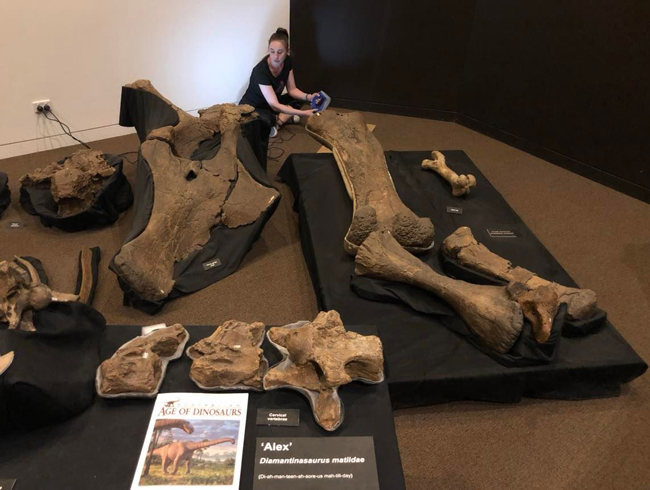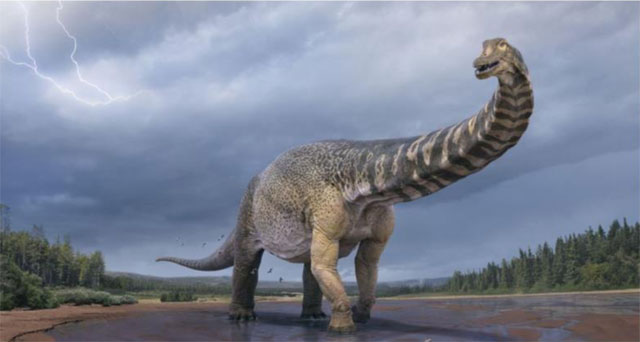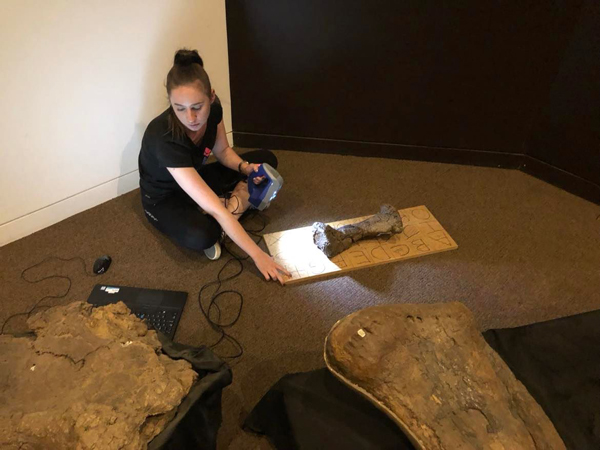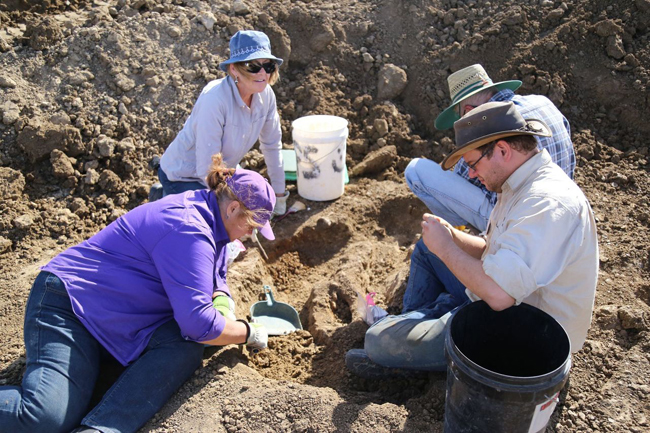Twelve New Australian Sauropods Described
Twelve new Australian sauropods have been classified following a comprehensive reassessment of Winton Formation fossil remains. Twelve new sauropod fossil specimens from the Winton Formation (Queensland, Australia) have been described. The extensive review, which involved CT scanning hundreds of fossil bones, has resolved the known sauropods from the Winton Formation into three distinct taxa.
Assessment of Twelve New Australian Sauropods Confirms Three Taxa
The taxa are Diamantinasaurus matildae, Savannasaurus elliottorum and Wintonotitan wattsi. A fourth sauropod, Australotitan cooperensis is now considered an indeterminate diamantinasaurian. The review suggests that the material previously assigned to A. cooperensis might represent a Diamantinasaurus. If this is the case, then Diamantinasaurus was capable of growing much larger than earlier studies indicated. A. cooperensis may become nomen dubium (dubious scientific name not widely recognised).

PhD candidate Samantha Beeston scanning Diamantinasaurus fossil material. Picture credit: Australian Age of Dinosaurs Museum of Natural History.
Picture credit: Australian Age of Dinosaurs Museum of Natural History
The ground-breaking study into these enormous, ground-shaking dinosaurs was led by University of College London PhD candidate Samantha Beeston in collaboration with the Australian Age of Dinosaurs Museum of Natural History. Beeston’s research was conducted as part of her Master’s thesis at Swinburne University of Technology, under the supervision of Dr Stephen Poropat (now at the Western Australian Organic and Isotope Geochemistry Centre, Curtin University). The paper has been published in the open-access journal PeerJ.

A life reconstruction of Australotitan cooperensis, the largest known animal to have ever lived in Australia. A reassessment of the fossilised bones suggests that A. cooperensis might be nomen dubium as the fossil remains could represent a very large specimen of Diamantinasaurus matildae. Picture credit: Queensland Museum.
Picture credit: Queensland Museum
To read an earlier blog article (2015) about titanosaur fossil remains later named A. cooperensis awaiting scientific description: Super-sized Aussie Titanosaur Awaits Scientific Description.

A sauropod excavation site photographed in 2011. Picture credit: Australian Age of Dinosaurs Museum of Natural History.
Picture credit: Australian Age of Dinosaurs Museum of Natural History
Three Australian Sauropods
The researchers were able to assign two new specimens to Diamantinasaurus matildae. In addition, two specimens were assigned to Savannasaurus elliottorum with three more being assigned to Wintonotitan wattsi. The other five specimens are too incomplete to classify at the genus level. They have been described as indeterminate diamantinasaurians. A lack of comparable specimens with overlapping bones has hampered precise classification of these five specimens.
The three recognised Winton Formation sauropod taxa are:
- Diamantinasaurus matildae – named in 2009 (Hocknull et al).
- Savannasaurus elliottorum – named in 2016 (Poropat et al).
- Wintonotitan wattsi – named in 2009 in the same scientific paper as D. matildae and the theropod Australovenator wintonensis (Hocknull et al).
Over five hundred sauropod bones were scanned as part of this research. This innovative approach enabled the scientists to evaluate each bone and compare it to other fossil specimens in the Museum’s extensive collection. The study has led to a better understanding of the unique traits that help to separate known species. Student Samantha Beeston explained that as there are so few bones preserved for Australotitan it makes it very difficult, if not impossible to assign new specimens to it, or to differentiate it from any of the other Winton Formation sauropod taxa.
She added: “Due to the limited fossil evidence for Australotitan, resolving its classification will be challenging.”

Student Samantha Beeston scanning the toe bone of Diamantinasaurus. Picture credit: Australian Age of Dinosaurs Museum of Natural History.
Picture credit: Australian Age of Dinosaurs Museum of Natural History
Significant for Australian Palaeontology
David Elliott, the Executive Chairman of the Australian Age of Dinosaurs Museum of Natural History commented that he was delighted to have more sauropod specimens in the Museum’s collection assigned to distinct species. He explained that having a better understanding of autapomorphies and anatomical traits leading to more confident assignment of taxa was a significant leap forward in Australian palaeontological research. The twelve new Australian sauropods would provide the basis for further research into the dinosaurs of the Winton Formation.
He added:
“These dinosaurs help demonstrate the diverse natural history of Australia during the Cretaceous Period and will become important exhibits at the new Australian Age of Dinosaurs Museum of Natural History.”

Volunteers work at the “Devil Dave” sauropod excavation site (2017). Picture credit: Australian Age of Dinosaurs Museum of Natural History.
Picture credit: Australian Age of Dinosaurs Museum of Natural History
Everything Dinosaur acknowledges the assistance of a media release from the Australia Age of Dinosaurs Museum of Natural History in the compilation of this article.
The scientific paper: “Reappraisal of sauropod dinosaur diversity in the Upper Cretaceous Winton Formation of Queensland, Australia, through 3D digitisation and description of new specimens” by Samantha L. Beeston, Stephen F. Poropat, Philip D. Mannion, Adele H. Pentland, Mackenzie J. Enchelmaier, Trish Sloan and David A. Elliott published in PeerJ.
The Everything Dinosaur website: Dinosaur Models and Toys.

